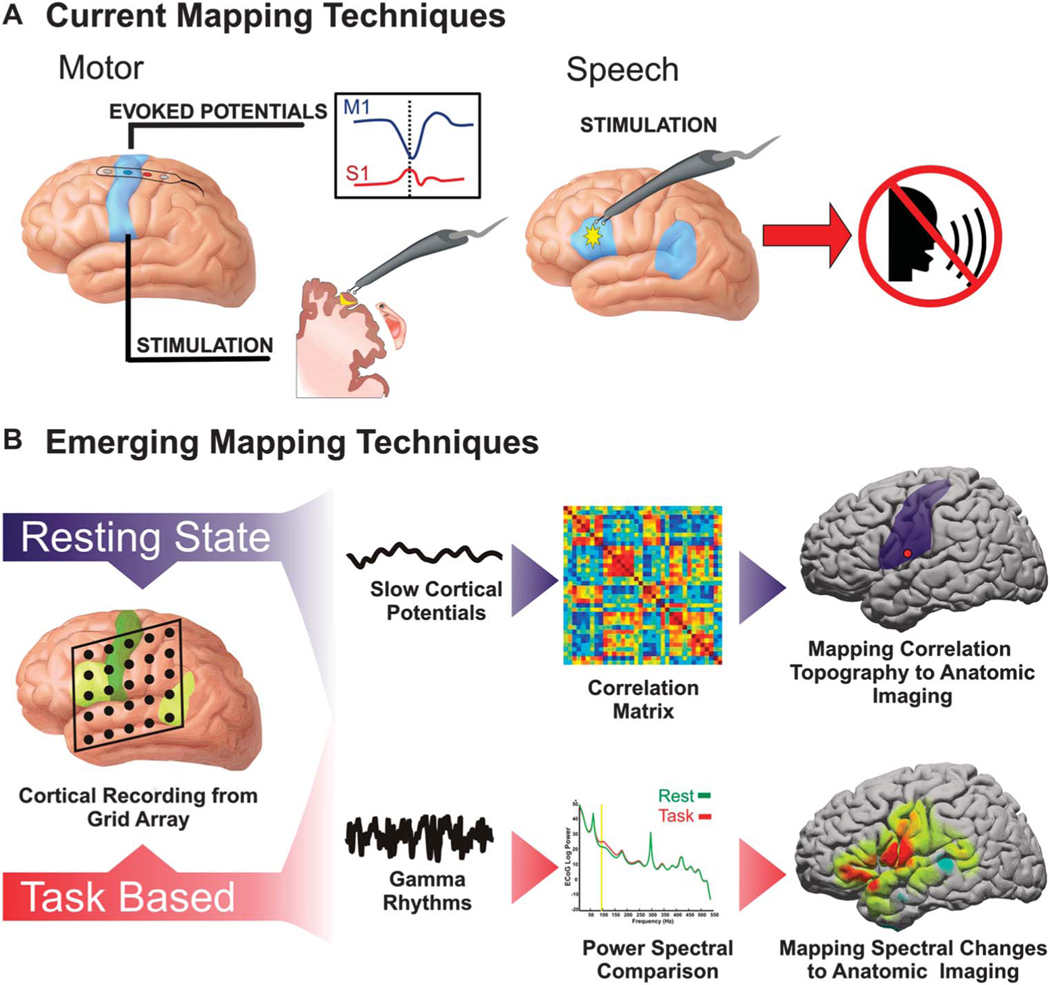FIGURE 1.
Summary of mapping techniques. A, the current methodologies to identify regions deemed eloquent, namely motor and speech cortex. Motor regions are currently identified with either passive localization using somatosensory evoked potentials associated with median nerve stimulation or with direct cortical stimulation. For somatosensory evoked potentials, there is typically a phase inversion between the primary motor cortex (M1) and primary sensory cortex (S1) indicative of central sulcus. Electrocortical stimulation is also used for motor localization. With the use of bipolar stimulators, the probe is moved from cortical site to cortical site until a motor response is elicited. B, functional localization accomplished by recording electrocorticographic brain signals from the surface of the cortex. Localization can be either purely passive, in which resting-state brain activity is used, or task based, in which a cortical change is associated with the performance of a cognitive action. Resting-state mapping relies on the correlation of infraslow rhythms known as slow cortical potentials. Task-based mapping typically relies on modulation of amplitude of high-frequency rhythms known as gamma rhythms.

